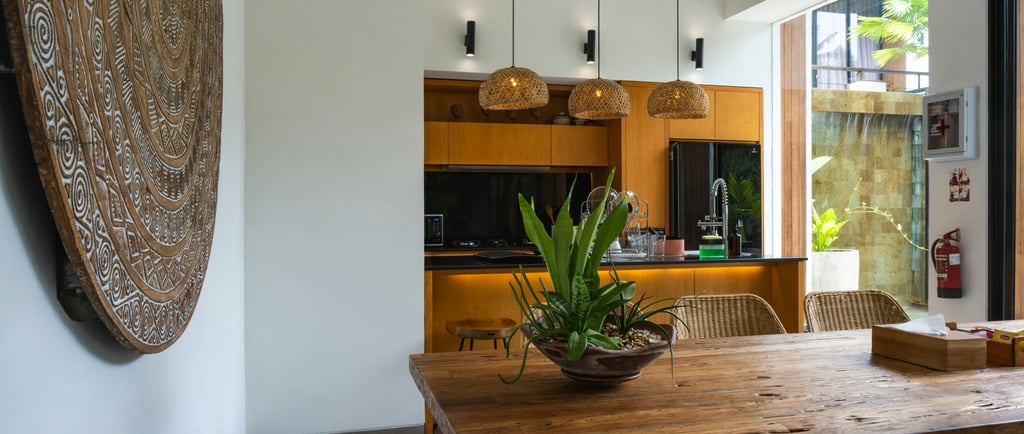Lighting Mistakes You Might Be Making (and How to Fix Them)
6/26/20253 min read


Welcome back to Adair Lane. When it comes to decorating a home, we often focus on the big things - sofas, rugs, wall art. But if your space still feels “off,” there’s a good chance the issue isn’t your furniture... it’s your lighting.
Lighting is one of the most powerful tools in home design. It sets the mood, highlights your style, and makes your rooms functional and welcoming. But it’s also one of the most overlooked and misunderstood elements.
In this post, we’re uncovering the most common lighting mistakes and showing you how to fix them like a designer—no electrician required.
1. Only Using Overhead Lighting
Let’s start with the most common mistake: relying solely on overhead lights. Yes, they’re functional but they can also be harsh, flat, and unflattering.
The Fix:
Layer your lighting. Designers always use a mix of:
Ambient lighting (like ceiling fixtures)
Task lighting (think: desk or reading lamps)
Accent lighting (decorative pieces that add mood)
Try placing a floor lamp beside a reading chair, adding a table lamp on your entry console, or using wall sconces to soften dark corners.
2. Lighting That’s Too Bright (or Too Dim)
Too much brightness makes your home feel sterile. Too little light makes it feel gloomy and cramped.
The Fix:
Use dimmers or multi-setting bulbs wherever possible. You want flexibility throughout the day from bright in the morning to cozy at night.
Also, consider using multiple light sources in each room instead of relying on a single bulb to do it all.
3. Using the Wrong Bulb Temperature
Color temperature matters. Cool-toned bulbs (5000K+) can make a space feel cold and clinical. Ultra-warm bulbs (under 2700K) can make everything feel too orange or dim.
The Fix:
Aim for 2700K to 3000K for most rooms. This gives a warm, soft white that flatters skin tones and makes your home feel inviting without sacrificing clarity.
Bonus: Stick to the same temperature in each room for consistency.
4. Placing Lamps in the Wrong Spots
Lamp placement can make or break your room layout. Ever sit on the sofa only to find there’s no light where you actually need it?
The Fix:
Think in terms of function + symmetry:
Place floor lamps behind or beside seating areas
Use table lamps on nightstands or sideboards
Add small accent lamps on open shelves or counters to layer in warmth
Don’t forget to consider cord visibility and natural light when choosing placement.
5. Not Using Lighting to Highlight Design Features
Do you have beautiful artwork, bookshelves, or an architectural detail? If it’s in the dark, it might as well not be there.
The Fix:
Use spotlights, uplights, or picture lights to highlight focal points. It brings your decor to life and makes the space feel thoughtful and finished.
Even a small lamp placed on a stack of books or a windowsill can help bring attention to the right parts of the room.
6. Choosing Lamps That Don't Fit the Room
We all love a pretty lamp, but form has to meet function. A tiny table lamp on a large sideboard can look awkward. A massive floor lamp in a small space can overwhelm.
The Fix:
Scale matters. Follow these general guidelines:
Use taller lamps (26"–34") for larger furniture like credenzas or nightstands
Choose slimmer, shorter lamps for tight corners or small tables
Look for shades that don’t exceed the width of your table
And remember - lamps are part of the decor, not just a utility. Pick styles that echo your home’s aesthetic.
7. Skipping Ambient Lighting in Small Spaces
We often assume that small rooms need less lighting. But dim or shadowy corners make tight rooms feel even smaller.
The Fix:
Even small spaces need multiple light sources. Consider:
Wall sconces that don’t take up floor space
Compact floor lamps with a slim footprint
Clip-on or swing-arm lights for multifunctional use
Adding one extra lamp can open up the room and create a more comfortable vibe.
Final Thoughts
Lighting is more than just function - it’s one of the most powerful styling tools in your home. By avoiding these common mistakes and layering your lights thoughtfully, you can instantly transform your rooms from flat and dull to warm, inviting, and polished.
The good news? You don’t need a remodel or a huge budget - just a few smart lighting choices and a better understanding of how light works in your space.
Looking for more inspiration? Explore our other blog posts for expert lighting tips and curated lamp recommendations to help you light every room beautifully.
Stay Elevated
The Adair Lane Team